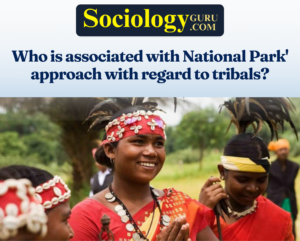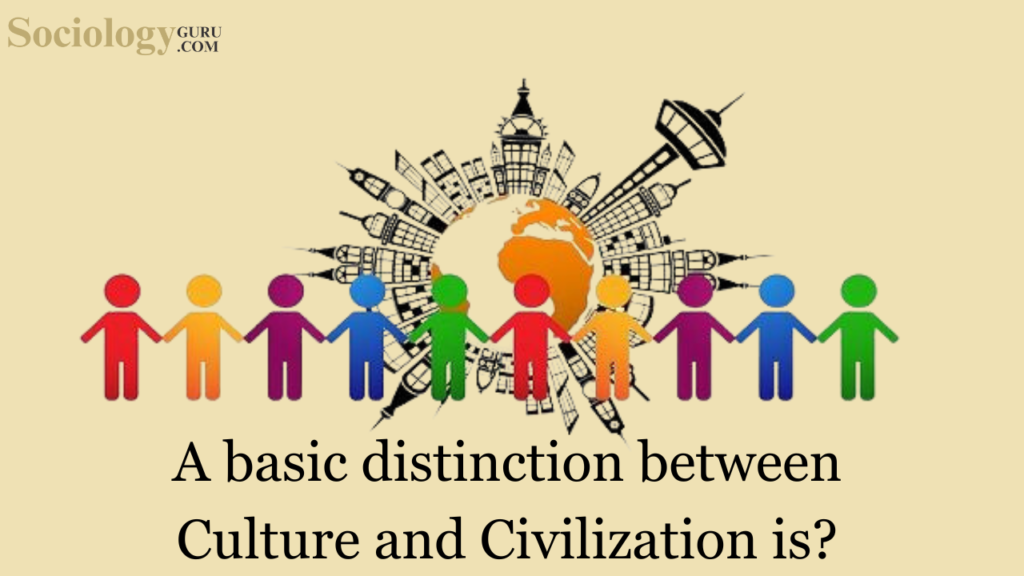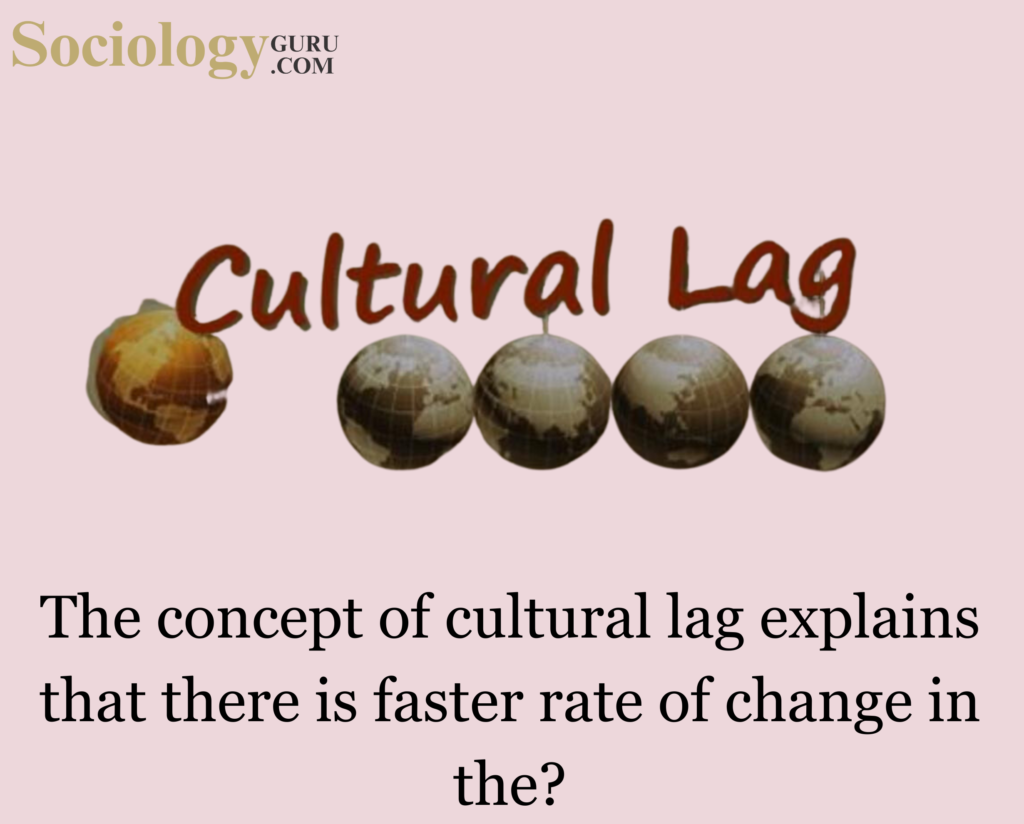Question: Who is associated with National Park’ approach with regard to tribals?
- V. Elwin
- Jawaharlal Nehru
- H.J. Hutton
- Sir Risley
Answer: (1)The question centers around the association of the “National Park” approach with regard to tribals, and the options include (a) V. Elwin, (b) Jawaharlal Nehru, (c) H.J. Hutton, and (d) Sir Risley. The correct answer is (a) V. Elwin. Verrier Elwin, a British anthropologist and missionary, is associated with the initial proposition of the “National Park” approach in the context of tribal communities in India. Verrier Elwin’s association with the idea of creating National Parks for tribal populations reflects a complex historical period marked by efforts to protect indigenous communities from external influences, preserve their traditional ways of life, and ensure their well-being. It’s essential to delve into the context and evolution of this approach to gain a comprehensive understanding. In the early phases of his career, Verrier Elwin was known for advocating the idea of creating National Parks as a means to safeguard tribal communities from what he perceived as the detrimental effects of rapid modernization and cultural intrusion. The concept of National Parks in this context did not refer to protected areas for wildlife conservation, as it commonly does today, but rather as designated regions where tribal people could live autonomously, shielded from external influences. Elwin’s proposal was rooted in a concern for preserving the unique cultures, traditions, and lifestyles of tribal communities. He viewed the National Park approach as a protective measure, shielding tribes from what he considered the adverse impacts of an “over-hasty and unregulated process of civilization.” The idea was to create isolated spaces where tribes could continue their traditional ways of life without facing the disruptions brought about by external forces. However, it’s important to note that this approach faced criticism and was later reconsidered by Elwin himself. The notion of confining tribal communities within National Parks was viewed skeptically and attracted disapproval for several reasons. Critics argued that it resembled a policy of isolation, akin to creating a museum or a zoo, which could potentially hinder the socio-economic progress of these communities. The critique of the National Park approach centered on concerns about perpetuating a static and frozen representation of tribal life, turning them into objects of study rather than dynamic participants in the changing social and economic landscape. The criticism suggested that isolating tribes within National Parks could hinder their ability to access resources, education, and opportunities for development. The evolution of Verrier Elwin’s stance on the National Park approach reflects the dynamic nature of discourse surrounding tribal welfare and development in India. Later in his career, Elwin moved away from advocating for National Parks as an exclusive solution. Instead, he began emphasizing the importance of integrating tribal communities into the broader fabric of society while still respecting and preserving their cultural distinctiveness. H.J. Hutton, another name mentioned in the context of the question, was also associated with the initial discussions on tribal policy in India. Like Elwin, Hutton proposed policies that involved the isolation of tribal communities to protect them from external influences. However, both Elwin and Hutton faced criticism for these recommendations, as they were perceived as restrictive and potentially detrimental to the progress and autonomy of tribal communities. The overarching debate surrounding the National Park approach speaks to larger questions about the balance between preservation and progress, isolation and integration when it comes to tribal communities. The discussion goes beyond mere policy recommendations; it delves into the philosophical underpinnings of how societies perceive and engage with indigenous populations. Jawaharlal Nehru, independent India’s first Prime Minister, was a pivotal figure in shaping policies related to tribal welfare and development. While Nehru was not directly associated with the initial National Park approach, his vision for tribal communities aligned with a broader perspective of integrating them into the mainstream while respecting their cultural diversity. Nehru’s approach emphasized the need for education, healthcare, and economic opportunities for tribal communities. He envisioned a model of development that allowed tribes to preserve their cultural identities while actively participating in the nation’s progress. Nehru’s policies aimed to strike a balance between the preservation of tribal cultures and their integration into the larger socio-economic framework of the country. Sir Risley, whose name is also mentioned in the options, was associated with the colonial administration in India and was involved in the formulation of census policies. However, his role in tribal policies, especially in the context of the National Park approach, is not as prominent as that of Verrier Elwin and H.J. Hutton. In conclusion, the association of Verrier Elwin with the National Park approach in the context of tribal welfare reflects a historical phase where different perspectives on indigenous communities coexisted. The initial proposal for National Parks aimed at protecting tribal cultures from external influences but faced criticism for its potential to stifle development and progress. The discourse around tribal welfare in India has evolved, with subsequent policies emphasizing a more inclusive approach that respects cultural diversity while facilitating socio-economic advancement. Understanding the historical context and the changing perspectives on tribal policies provides valuable insights into the complexities of addressing the needs and aspirations of indigenous communities in a rapidly evolving society. |
Take a Quick Sociology Quiz to measure your Performance
Frequently Asked Questions:
1. Question: Define the term “ethnic movement” and provide an example from India.
Answer: An ethnic movement refers to a collective effort by a group sharing common cultural, linguistic, or religious traits, seeking to assert their identity and rights; an example from India is the Khalistan Movement in Punjab.
2. Question: Identify the main objectives behind the Gorkhaland ethnic movement.
Answer: The Gorkhaland ethnic movement primarily seeks to establish a separate state for India’s Nepali-speaking population in the Darjeeling region, advocating for linguistic and cultural recognition and political autonomy.
3. Question: What was the Operation Blue Star, and which ethnic movement was it related to?
Answer: Operation Blue Star was a military action in 1984, aiming to remove Sikh militants hiding in the Golden Temple in Amritsar; it is related to the Khalistan movement, which sought a separate Sikh country.
4. Question: Mention a critical factor that triggered the emergence of ethnic movements in India, as discussed by Dipankar Gupta.
Answer: Dipankar Gupta emphasized that ethnicity is fundamentally a political process, wherein caste and religion, the key components of identity formation, are politicized by leaders for vested interests.
5. Question: What were the primary reasons for the Assam Ethnicity conflicts involving Bodo tribals and Bengali Muslim settlers?
Answer: The Assam Ethnicity conflicts primarily stemmed from issues related to immigration, land rights, and resource allocation, leading to clashes, riots, and evolving relationships among indigenous communities to address challenges.
6. Question: Briefly describe the role of the Dravidian Movement in terms of caste and societal structure.
Answer: The Dravidian Movement, led notably by E.V. Ramasamy, aimed to establish an egalitarian society, focusing on anti-Brahmanism and advocating for equal rights for backward castes, while also introducing reforms like self-respect marriages.
7. Question: Name the prominent ethnic movements in North-East India and specify one common objective.
Answer: Prominent ethnic movements in North-East India include the Nagas’ and Mizos’ struggles; a common objective was to gain autonomy and recognition for their distinct tribal identities and cultural uniqueness.
8. Question: What is the key argument of Gail Omveldt regarding traditional Indian society and multiculturalism?
Answer: Gail Omveldt opposed romanticizing traditional Indian society, arguing that hierarchy has always dominated it and dismissing the notion that multiculturalism is an intrinsic feature of Indian society as a myth.
9. Question: Briefly explain the social hierarchy factor as a contributing element to ethnic movements as suggested by Olzak.
Answer: Olzak suggests that the construction of hierarchies among ethnic communities, which often leads to the suppression of one group by another, is a key factor that can instigate social and ethnic movements.
10. Question: Identify one consequence of the unequal economic development factor within the context of ethnic movements in India.
Answer: One consequence of unequal economic development is the marginalization and underdevelopment of certain groups, leading to feelings of alienation and sometimes initiating ethnic movements as these groups strive for equality and recognition.
To master these intricacies and fare well in the Sociology Syllabus, aspiring sociologists might benefit from guidance by the Best Sociology Teacher and participation in the Best Sociology Coaching. These avenues provide comprehensive assistance, ensuring a solid understanding of sociology’s diverse methodologies and techniques.
META TAGS:
Why Vikash Ranjan’s Classes for Sociology?
Proper guidance and assistance are required to learn the skill of interlinking current happenings with the conventional topics. VIKASH RANJAN SIR at SOCIOLOGY GURU guides students according to the Recent Trends, making him the Best Sociology Teacher for Sociology.
At Sociology Guru, the Best Sociology Coaching platform, we not only provide the best study material and applied classes for Sociology but also conduct regular assignments and class tests to assess candidates’ writing skills and understanding of the subject.
Choose The Best Sociology Teacher for your Preparation?
To master these intricacies and fare well in the Sociology Syllabus, aspiring sociologists might benefit from guidance by the Best Sociology Teacher and participation in the Best Sociology Coaching. These avenues provide comprehensive assistance, ensuring a solid understanding of sociology’s diverse methodologies and techniques. Sociology, Social theory, Best Sociology Teacher, Best Sociology Coaching, Sociology Syllabus.
Best Sociology Teacher, Sociology Syllabus, Sociology, Sociology Coaching, Best Sociology Coaching, Best Sociology Teacher, Sociology Course, Sociology Teacher, Sociology Foundation, Sociology Foundation Course, Sociology CUET, Sociology for IAS, Sociology for UPSC, Sociology for BPSC, Sociology for UGC NET, Sociology for JPSC,
Follow us :
KEYWORD:-National Park, National Park, National Park, National Park, MA CUET SOCIOLOGY



